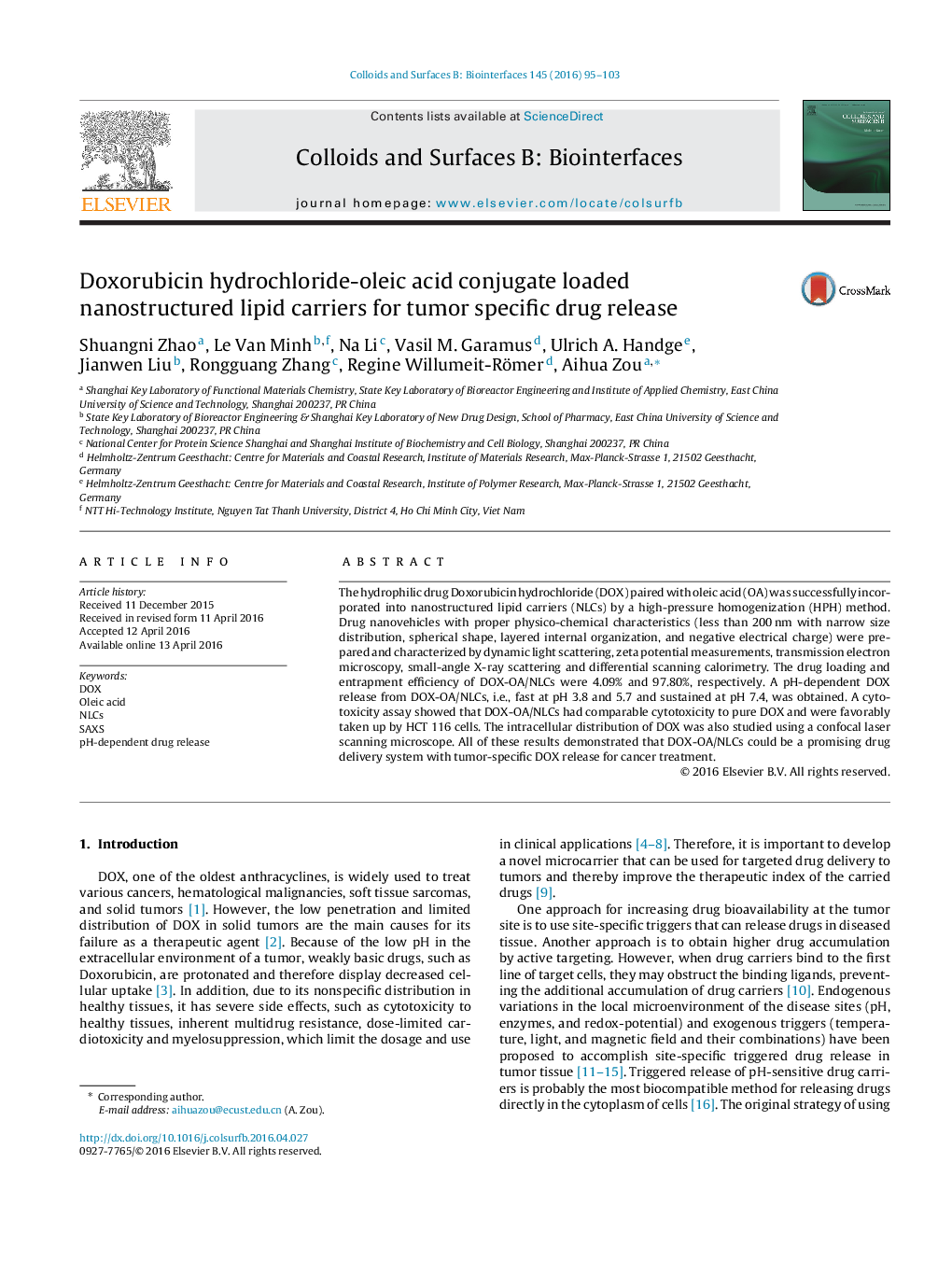| Article ID | Journal | Published Year | Pages | File Type |
|---|---|---|---|---|
| 598928 | Colloids and Surfaces B: Biointerfaces | 2016 | 9 Pages |
•The stable Doxorubicin hydrochloride loaded NLC was designed and prepared.•The DOX-OA/NLCs had a tumor specific drug release.•DLS, TEM, DSC and SAXS were used to study the physicochemical properties.•The EE and DL of DOX in NLC was 97.80% and 4.09%, respectively.•The DOX-OA/NLCs had comparable cytotoxicity to pure DOX and were favorably taken up by HCT 116 cells.
The hydrophilic drug Doxorubicin hydrochloride (DOX) paired with oleic acid (OA) was successfully incorporated into nanostructured lipid carriers (NLCs) by a high-pressure homogenization (HPH) method. Drug nanovehicles with proper physico-chemical characteristics (less than 200 nm with narrow size distribution, spherical shape, layered internal organization, and negative electrical charge) were prepared and characterized by dynamic light scattering, zeta potential measurements, transmission electron microscopy, small-angle X-ray scattering and differential scanning calorimetry. The drug loading and entrapment efficiency of DOX-OA/NLCs were 4.09% and 97.80%, respectively. A pH-dependent DOX release from DOX-OA/NLCs, i.e., fast at pH 3.8 and 5.7 and sustained at pH 7.4, was obtained. A cytotoxicity assay showed that DOX-OA/NLCs had comparable cytotoxicity to pure DOX and were favorably taken up by HCT 116 cells. The intracellular distribution of DOX was also studied using a confocal laser scanning microscope. All of these results demonstrated that DOX-OA/NLCs could be a promising drug delivery system with tumor-specific DOX release for cancer treatment.
Graphical abstractFigure optionsDownload full-size imageDownload as PowerPoint slide
